Missed deadlines. Content bottlenecks. Endless revision cycles. Sound familiar? When your content team is drowning in spreadsheets, buried in feedback threads, and constantly playing catch-up, something’s got to give. And it’s usually either your team’s sanity or your content quality.
But here’s the thing: chaos isn’t your content program’s default state. Those all-too-familiar 11th-hour scrambles and “Who has the latest version?” moments are frustrating but fixable. The difference between high-performing content teams and the rest often comes down to one thing: a bulletproof workflow.
In this guide, we’ll show you how to transform your content operations from a constant fire drill into a precision engine.
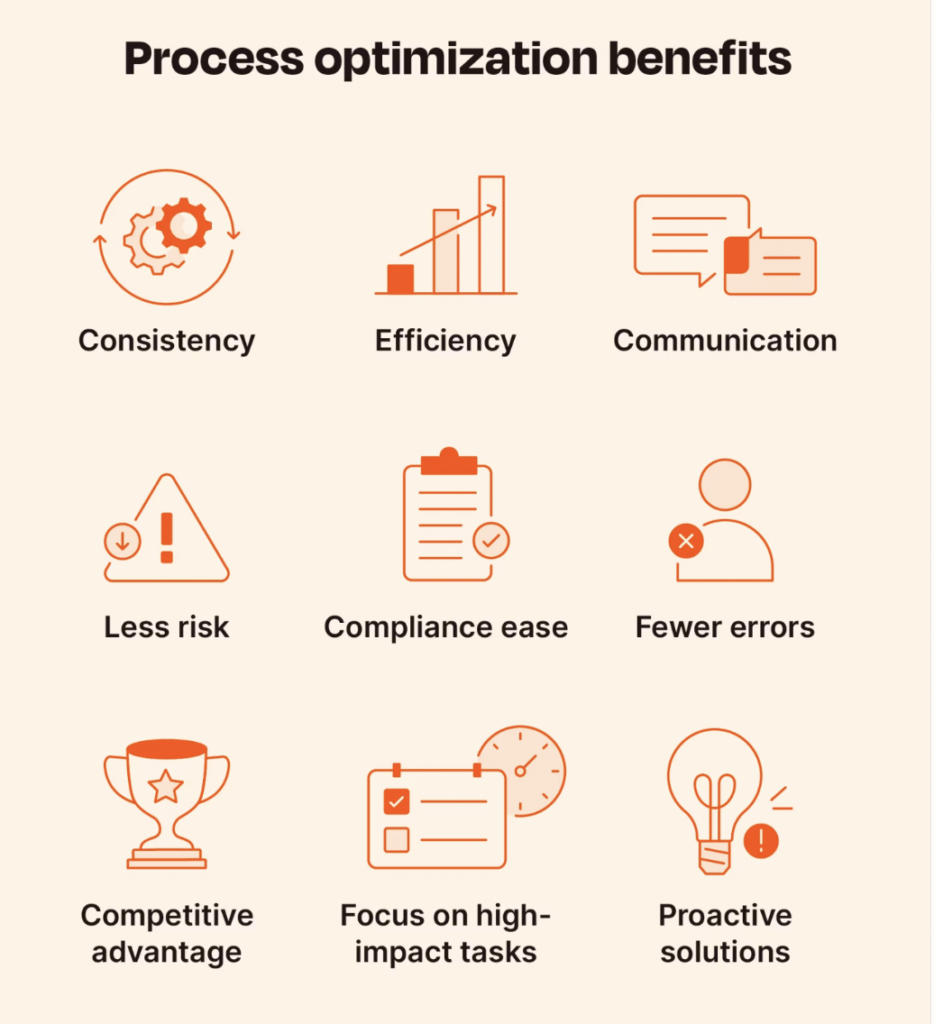
Why optimizing your content workflow matters
Content creation requires a balance of quality, timeliness, and coordination. Without a structured workflow, even the most skilled teams can run into delays, missed deadlines, and miscommunication.
A streamlined workflow clarifies each step—from initial ideas to final publication. It eliminates inefficiencies, allowing your team to focus on producing content that engages your audience and supports your business goals.
To make the most of your content efforts, here are five undeniable benefits of an optimized content workflow:
1. Improve ROI with smart workflows
Smart workflows slash your cost-per-content while up-ticking your team’s output. Think content templates that turn blank pages into first drafts. Automation that handles your social scheduling while you sleep.
When you strip away the busywork, your team can focus on what matters: strategic thinking and cross-departmental collaboration that drives results. You’ll produce higher-value content at a lower cost—transforming your content operation from a resource drain into a revenue driver.
2. Publish faster to stay ahead of your competitors
Lightning-fast workflows turn your team into first-movers—jumping on trends while your competitors are still drafting their first blogs. When breaking news hits your industry, you’ll be publishing thought leadership while others play catch-up. That’s the difference between leading the conversation and lurking in the comments section.
3. Scale with simplicity
Your content engine should purr at 10 pieces a month and roar at 100. That’s where a centralized content management system becomes your scaling superpower.
One source of truth. One publishing hub. One system that turns content chaos into clockwork—whether you’re managing a dozen blog posts or a thousand-asset library. When your team can double their output without doubling your tools, you’ve built more than a workflow.
4. Improve quality control
Quality control lives in every step of a well-optimized workflow—not just the final review. With strategic checkpoints and clear feedback loops built into your process, errors get caught early and often.
The result? Polished, professional content that builds your brand’s authority. When quality becomes part of your workflow’s DNA, you’ll stop playing defense against embarrassing mistakes and start delivering content that commands attention.
5. Increase creative output
Efficiency paves the way for creativity. When your team isn’t bogged down by disorganized processes, they have the mental bandwidth to focus on developing innovative and impactful ideas.
This freed-up time and energy can be dedicated to brainstorming and creating content that drives real results, leading to more engaging and original work that resonates with your audience.
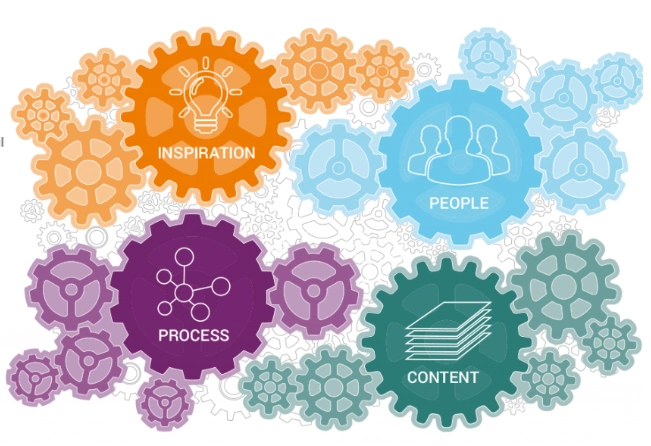
Common challenges in optimizing your content workflow
Before we explore how to optimize your workflow, it’s important to recognize the common challenges that often hinder content teams. Addressing these roadblocks will set the stage for more effective solutions.
Siloed teams hinder collaboration
Marketing masters messaging in their cubicles, sales builds decks in the conference room, and product pumps out updates in a vacuum.
These content silos breeding duplicate work, and burn budget. Break down these walls with shared dashboards that turn individual sprints into coordinated plays. When every team can see the bigger picture, your content strategy transforms from a game of telephone into a symphony of aligned efforts. No more redundant content. No more mixed messages. Just one powerful brand story, told consistently across every channel.
Fragmented technology creates bottlenecks
Six project management tools. Four messaging apps. Three different ways to share files. Your tech stack creates a digital gridlock for your team. Cut through the chaos with a crystal-clear standard operating procedure (SO) that maps every tool to its moment in your content lifecycle.
When everyone knows where to pitch ideas, track projects, and collaborate on drafts, your workflow transforms from a maze into a highway.
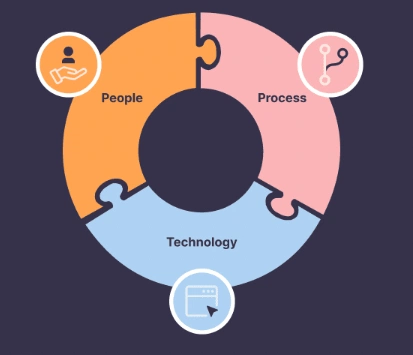
Unclear roles lead to missed deadlines
When team members are unsure of their responsibilities, tasks can easily slip through the cracks, leading to missed deadlines and confusion. The solution is to clearly define each person’s role at every stage of the content workflow.
Drop your tasks into Asana or Trello, and watch chaos transform into clarity. Every deadline gleams on your calendar. Every task owner stands accountable. No more “I thought someone else was handling that” moments. Just pure, visual proof of progress—and the sweet satisfaction of dragging tasks to “done.”
Finding the balance between quality and speed is difficult
Producing content quickly often means sacrificing quality, but rushing through processes can damage your brand. To find a balance, establish a pace that prioritizes both speed and thoroughness.
Bake strategic review cycles into your workflow, and watch typos die early, messaging align faster, and polish emerge naturally. Your audience doesn’t see the three rounds of revisions or the late-night edits. They just see content that shines, delivered right on schedule.
Resistance to change hinders progress
Introducing new workflows or tools can be met with resistance, making improvements harder to implement. To ease the transition, provide comprehensive training and clearly explain how the changes will benefit the team.
Encourage feedback and offer support throughout the adjustment period. This approach helps teams understand the value of the new processes, making them more likely to adopt them and work efficiently.
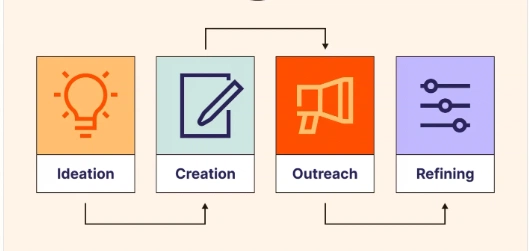
5 actionable steps to optimize your content workflow
Let’s break down the five steps that can help you build an efficient content workflow that supports your business goals.
Step 1: Clarify your goals and strategy
Start by defining your goals. Are you trying to boost brand awareness, drive engagement, or increase leads? Having clear goals will guide your workflow and content strategy.
Next, focus on your audience. What do they need? What are their preferences? Understanding your audience will help you craft content that connects with them.
Once your goals and audience are clear, map out your content themes, formats, and distribution channels. Make sure everything aligns with your business objectives.
Step 2: Standardize your workflow
Random processes breed random results. But when every stage of your content pipeline follows a battle-tested playbook—from first spark to final publish—magic happens. Ideas flow faster. Deadlines stick. Your content machine transforms from a game of chance into a precision instrument.
When optimizing your workflow, consider these focus areas:
- Define clear processes, roles, and responsibilities.
- Automate repetitive tasks wherever possible.
- Eliminate bottlenecks that slow progress.
- Continuously refine workflows to increase efficiency.
While tools like Asana keep your projects humming, Buffer and Hootsuite can schedule your social media in their sleep. Every automated task is a gift of time—precious hours your team can pour into big-picture strategy and creative breakthroughs. Your content calendar becomes mission control, orchestrating a steady drumbeat of content that never misses a beat or skips a deadline.
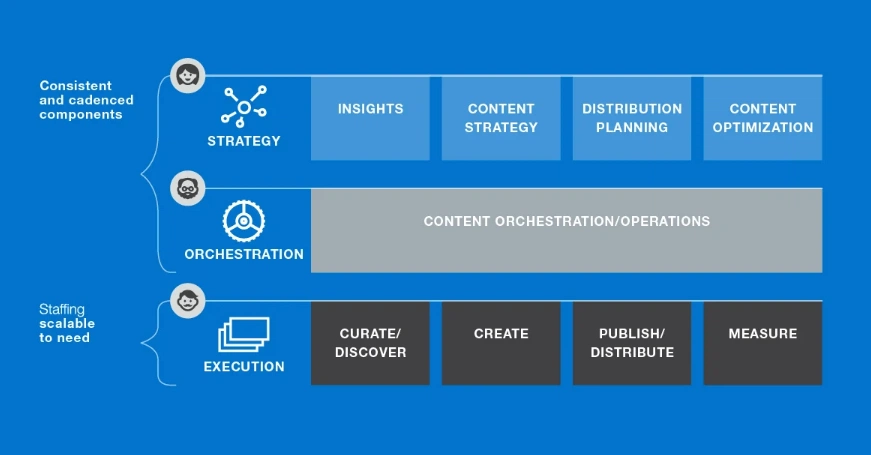
Step 3: Implement multi-stage quality assurance
Quality control should be built into your workflow. Establish a quality assurance process with multiple stages of review to ensure that every piece of content is polished and meets your brand’s standards.
Clear guidelines for tone, style, and format are essential. Once these are in place, use a multi-stage review process that includes fact-checking, proofreading, and final approvals. And don’t forget to analyze performance data regularly to see what’s working and where improvements can be made.
Step 4: Allocate resources effectively
Start by evaluating your team’s current capacity. Are there resource gaps? If so, allocate your budget wisely to bring in the additional resources or tools you need.
If your team is small, consider building a network of reliable freelancers and subject matter experts (SMEs) who can help when your workload becomes too much to handle in-house.
Step 5: Monitor and refine your workflow
A content workflow should never remain static. Regularly review and refine your processes to find areas for improvement. Whether it’s upgrading your tools, reassigning responsibilities, or adjusting your timelines, it’s important to stay flexible.
Monitor market changes and adjust your strategy when necessary. Staying adaptable will keep your team efficient and productive, even as your business and content needs evolve.
FAQs
Use project management tools like Asana to organize tasks, Slack for communication, and content management systems like WordPress to streamline publishing. These tools make collaboration easier and ensure everything stays on track.
Set up a structured approval process with version control systems that track changes and approvals. This ensures transparency and reduces the risk of errors during revisions.
Ensure SEO best practices are followed, schedule posts at optimal times, and use analytics to measure performance. This way, you can continue refining your workflow and make data-driven decisions.
Don’t lose sight of your main goal: Helping your audience
Every workflow optimization, every streamlined step, and every automated task serves one master: your audience’s success. When you nail this, you’re not mindlessly pushing out content—you’re building trust bridges that turn casual readers into loyal followers and skeptics into believers.
Start small. Test your processes, learn what works, and refine as you go. Building an efficient content workflow takes time, but the results—improved content quality, better collaboration, and faster output—are well worth the effort.




